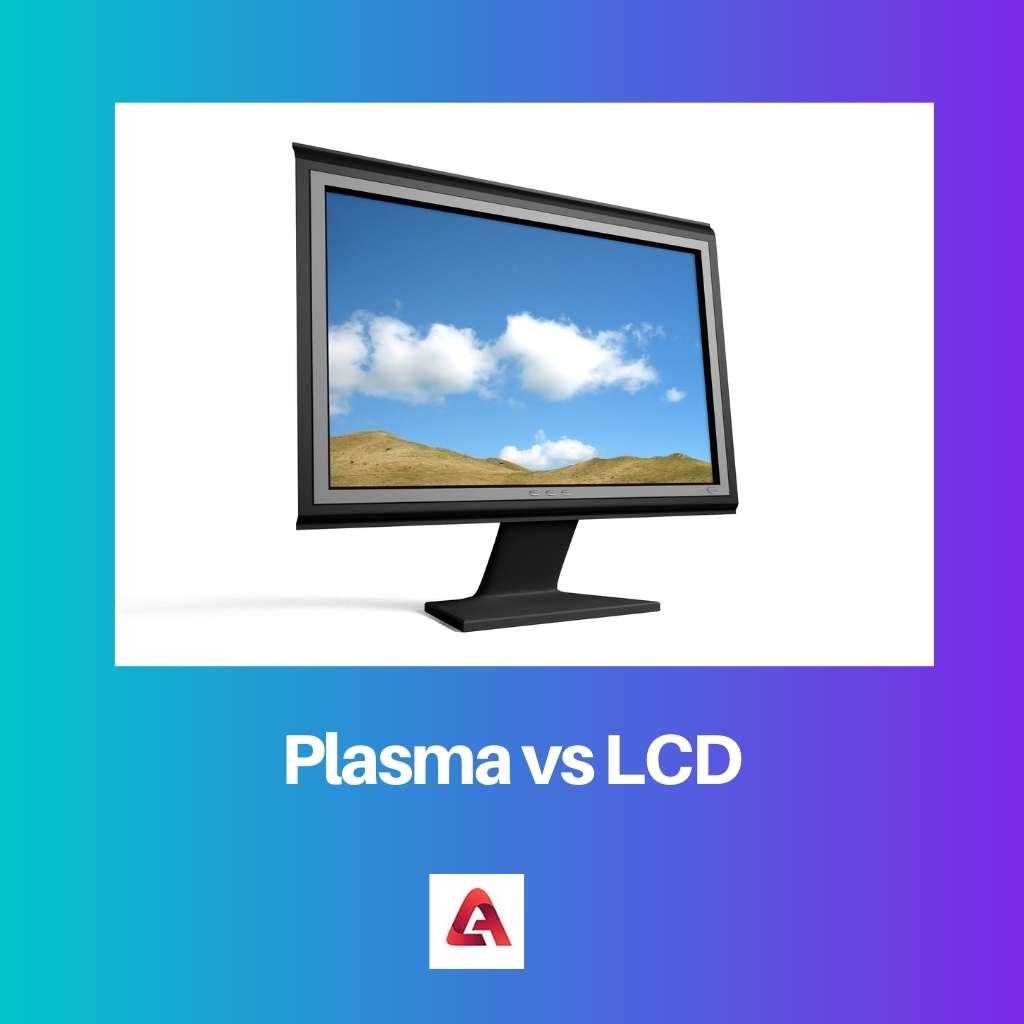We are frequently perplexed as to how to select the greatest HDTV screen in terms of visual quality, price, and, of course, power consumption.
Plasma and LCD are two different types of display screens that promise high-tech eye comforting picture quality to the people. These both follow distinct functions to display content to the users.
Key Takeaways
- Plasma displays use ionized gas to create images, whereas Liquid Crystal Displays (LCDs) use liquid crystals and backlighting.
- Plasma screens provide better color accuracy, contrast ratios, and motion handling than LCD screens.
- LCDs consume less power, are lighter, and have a longer lifespan than plasma screens.
Plasma vs LCD
Plasma TVs use a matrix of tiny cells filled with gas (such as neon) that emits ultraviolet light when excited by an electrical current. LCD (liquid crystal display) TVs use a backlight and liquid crystals to create the image. LCD TVs are known for their thin profile and good colour accuracy.

Plasma displays flourished into the market in 1964 and were invented in the University of Illinois at Urbana–Champaign for the PLATO computer system.
It is a flat screen in which cells consisting of plasma (superheated matter that is extracted from the atoms and produces ionized gas) are present. This mechanism is responsible for the display.
LCD stands for liquid-crystal display that came into the market in 1968. In this display, liquid crystal solution is placed between two polarised glasses that focus on the vertical light by blocking horizontal light for viewers.
Although it has a flat screen, the size of the screen is smaller than the plasma display.
Comparison Table
| Parameters of Comparison | Plasma | LCD |
|---|---|---|
| Invented In | Plasma display was invented in 1964. | The first LCD was invented in 1968. |
| Power Consumption | Plasma display consumes more electricity. | LCDs can operate on less power. |
| Screen Size | The maximum screen size is 42 inches. | LCDs are smaller than plasma displays. |
| Backlight | Plasma displays do not have the option of a backlight. | In LCD, a feature of the backlight is available. |
| Lifespan | Plasma display has a smaller lifespan of up to 60,000 hours. | LCD has a lifespan of up to 1 lakh hours. |
What is Plasma?
Plasma displays first appeared in 1964 and were developed by a group of university students for the PLATO project (Programmed Logic for Automatic Teaching Operations).
It became well-known worldwide, and many electronics firms (Samsung, Sony) brought plasma displays into the market. It is a flat-screen device that is flooding the market because of its large size.
The minimum size of the screen is 42 inches, which creates an excellent environment for personal space for viewers. It works on the mechanism of plasma matter. Since the plasma screen does not have a backlight, it does not contain mercury.
It has a few positive aspects. The first one is that it has better contrasts, and its contrast ratio (black: white) is 3000:1. So, plasma display is an outstanding choice for displaying deeper blacks.
Since plasma display pixels have three colors (blue, red, and green), they generate a great color combination when combined. It comes with HD features. It boasts a faster refresh rate on the screen.
it consumes high electricity as compared to similar displays. Moreover, some customers complained that their plasma display gets hot in less time. Additionally, it is more expensive than LCDs and has a shorter lifespan.
Due to many disadvantages, plasma display had been superseded by OLED, and its manufacturing ended in the USA and China (the two largest markets).

What is LCD?
LCD is an acronym for liquid-crystal display that came into the market in 1968, just after plasma displays. It is successful in sustaining its position in the market.
It works on a simple mechanism of blacklight or reflectors as it does not emit direct light to display the content. Therefore, it consists of a small portion of mercury for the display function.
LCD has umpteen applications such as computers, TV, cockpit display in Airplane, projectors, digital cameras, etcetera. The LCD can be as tiny as 13 inches for small devices and as large as 57 inches for home theatres and other personal and commercial applications.
It took the place of bulky CRTs that had thick displays. Its contrast ratio is 1000:1, so it lacks in true blacks. It does not have any burn-in issues when the screen is on for a large time because phosphors are not present.
Additionally, it consumes less electricity and is a pocket-friendly option than plasma. Its lifespan is excellent, which ranges from 50,000 hours to 10,00,00 hours.
Since LCDs produce colors by modifying the light waves by omitting white color from waves, it becomes difficult to achieve color efficiency.
Because LCD was designed to bring evolution to the computer world, it has slower refresh rates for watching videos on screens.

Main Differences Between Plasma and LCD
- The plasma display is expensive and has burn-in issues. However, LCD is cheap and does not get hot rapidly.
- The plasma display consists of plasma that is responsible for the display. On the other hand, LCDs contain liquid crystals and very little mercury.
- The plasma display has a higher contrast ratio of black: white than LCD.
- The colors in the plasma display are true and more accurate than the LCD color display.
- The plasma display is obsolete in the USA and China’s market. On the contrary, LCDs are still in fashion.
- The plasma display has a higher refresh rate of the videos when compared to LCD.
- The plasma was originally intended for PLATO. However, LCD was for computer screens.

- https://www.sciencedirect.com/science/article/pii/S0379677900013394
- https://onlinelibrary.wiley.com/doi/abs/10.1889/1.2812989
